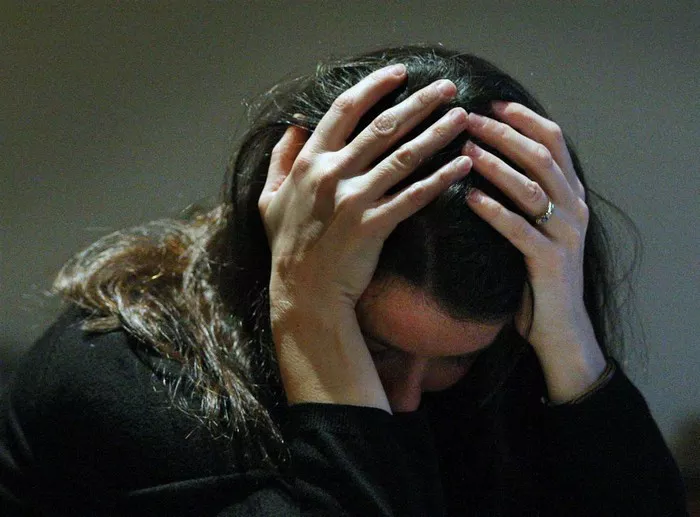Introduction:
Schizoaffective disorder is a mental health condition that is often misunderstood and misdiagnosed. It is a complex condition that combines symptoms of both schizophrenia and mood disorders such as depression or bipolar disorder. However, it is distinct from both of these conditions and requires a unique approach to diagnosis and treatment. In this article, we will explore the key differences between schizoaffective disorder and schizophrenia, as well as provide an overview of the symptoms, diagnosis, and treatment of schizoaffective disorder.
The Differences between Schizoaffective Disorder and Schizophrenia
Schizophrenia is a mental health condition that is characterized by a range of symptoms, including delusions, hallucinations, disorganized speech and behavior, and a lack of motivation or interest in social activities. Schizoaffective disorder, on the other hand, is a condition that combines symptoms of both schizophrenia and mood disorders such as depression or bipolar disorder.
The key difference between schizoaffective disorder and schizophrenia is the presence of mood symptoms. In schizoaffective disorder, individuals experience both the psychotic symptoms of schizophrenia and the mood symptoms of a mood disorder. This can include symptoms such as depression, mania, or a mixture of both. In contrast, individuals with schizophrenia do not typically experience mood symptoms.
Another important difference between schizoaffective disorder and schizophrenia is the duration and frequency of symptoms. In schizoaffective disorder, individuals experience symptoms of both schizophrenia and a mood disorder for a significant period of time, typically at least two weeks. In contrast, individuals with schizophrenia experience symptoms of psychosis for a longer period of time, typically six months or more.
Symptoms of Schizoaffective Disorder
The symptoms of schizoaffective disorder can vary widely from person to person, but typically involve a combination of psychotic symptoms and mood symptoms. Psychotic symptoms can include delusions, hallucinations, disorganized speech and behavior, and a lack of motivation or interest in social activities. Mood symptoms can include depression, mania, or a mixture of both.
The specific symptoms of schizoaffective disorder can depend on the subtype of the condition. There are two subtypes of schizoaffective disorder: bipolar type and depressive type. In the bipolar type, individuals experience episodes of mania or hypomania in addition to psychotic symptoms and depression. In the depressive type, individuals experience episodes of depression in addition to psychotic symptoms.
Diagnosis of Schizoaffective Disorder
Diagnosing schizoaffective disorder can be challenging because it requires an accurate assessment of both psychotic symptoms and mood symptoms. To diagnose schizoaffective disorder, a mental health professional will typically conduct a thorough evaluation that includes a physical exam, medical history, and psychological assessment.
The diagnostic criteria for schizoaffective disorder include:
Presence of both psychotic symptoms and mood symptoms
Symptoms of psychosis and mood disorder occurring at the same time
Symptoms of psychosis and mood disorder present for a significant period of time, typically at least two weeks
Symptoms that are not due to substance abuse or another medical condition
Treatment of Schizoaffective Disorder
The treatment of schizoaffective disorder typically involves a combination of medication and psychotherapy. Medications that are commonly used to treat schizoaffective disorder include antipsychotic medications, mood stabilizers, and antidepressants. These medications can help to reduce psychotic symptoms and stabilize mood.
Psychotherapy can also be an important part of treatment for schizoaffective disorder. Cognitive behavioral therapy (CBT) and other forms of psychotherapy can help individuals to manage symptoms, improve coping skills, and develop a more positive outlook on life. Family therapy can also be helpful in improving communication and reducing stress within the family.
In addition to medication and psychotherapy, lifestyle changes can also be helpful in managing symptoms of schizoaffective disorder. This can include engaging in regular exercise, getting enough sleep, eating a balanced and nutritious diet, and avoiding alcohol and drugs.
Conclusion:
In conclusion, schizoaffective disorder is a complex mental health condition that combines symptoms of both schizophrenia and mood disorders such as depression or bipolar disorder. It is distinct from both of these conditions and requires a unique approach to diagnosis and treatment. The key differences between schizoaffective disorder and schizophrenia include the presence of mood symptoms and the duration and frequency of symptoms. The treatment of schizoaffective disorder typically involves a combination of medication, psychotherapy, and lifestyle changes. With the right treatment and support, individuals with schizoaffective disorder can manage their symptoms and improve their overall quality of life.
[inline_related_posts title=”You Might Be Interested In” title_align=”left” style=”list” number=”6″ align=”none” ids=”4331,4243,4240″ by=”categories” orderby=”rand” order=”DESC” hide_thumb=”no” thumb_right=”no” views=”no” date=”yes” grid_columns=”2″ post_type=”” tax=””]






























